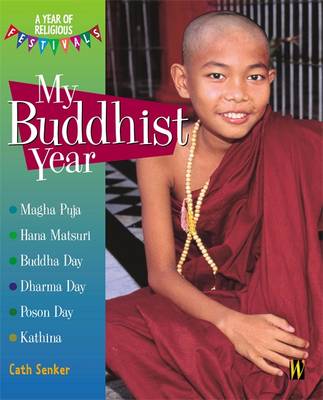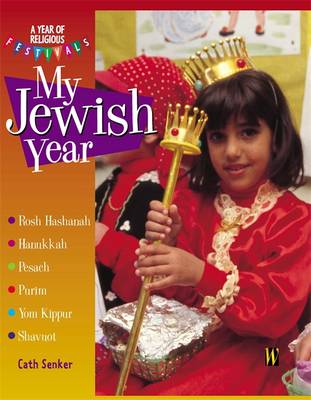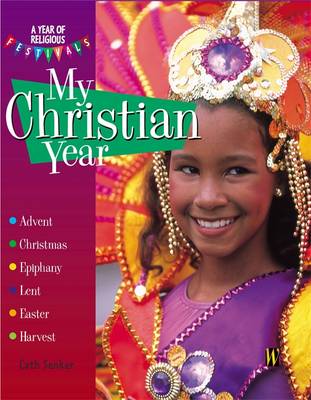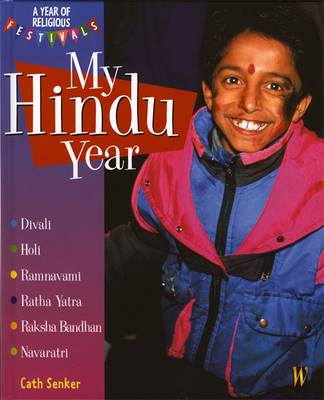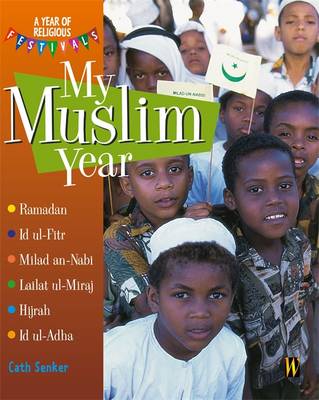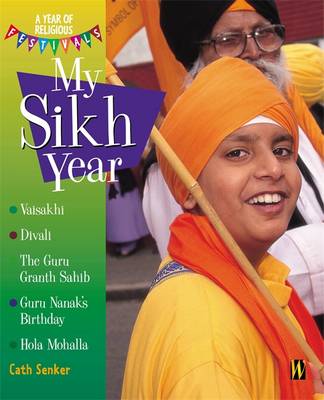A Year of Religious Fest
6 total works
This book moves chronologically through the calendar year and looks at the typical events, customs and celebrations celebrated by Buddhist children. Festivals such as Hana Matsuri, Wesak or Parinirvanay, and personal customs such as Sangha Day and Kathina are experienced through the use of religious articles, books, buildings, symbols and food. Look inside eight-year-old Carolina's diary to read what it's like to be at each event.
This book moves chronologically through the calendar year and looks at the typical events, customs and celebrations celebrated by Jewish children. Festivals such as Rosh Hashanah, Sukkot and Pesach are explored through the use of religious articles, books, buildings, symbols and food. Look inside eight-year-old Adam's diary to read what it's like to be at each event. This book discusses: What does it mean to belong? (Year 1 - looking at religious symbols, clothes, buildings and festivals), How do Jewish people express their beliefs in practice? (Year 1), Beliefs and practices (Year 1), Celebrations (Year 2), What do signs and symbols mean in religion? (Year 3), and, What is Torah and why is it important to Jewish people? (Year 3).
This book moves chronologically through the calendar year and looks at the typical events, customs and celebrations celebrated by Christian children. Festivals such as Christmas and Easter, and personal customs such as baptism are explored through the use of religious articles, books, buildings, symbols and food. Look inside nine-year-old Janay's diary to read what it's like to be at each event. What does it mean to belong? (Year 1 - looking at religious symbols, clothes, buildings and festivals), What does it mean to belong to Christianity? (Year 1), Beliefs and practices (Year 1), Celebrations (Year 2), What do signs and symbols mean in religion? (Year 3).
This book moves chronologically through the calendar year and looks at the typical events, customs and celebrations celebrated by Hindu children. Festivals such as Divali and Holi, and personal customs such as Raksha Bandhan are explored through the use of religious articles, books, buildings, symbols and food. Look inside eight-year-old Dhara's diary to read what it's like to be at each event. This book links to the following units in the DfES Schemes of Work: What does it mean to belong? (Year 1, looking at religious symbols, clothes, buildings and festivals), beliefs and practice - generic (Year 1), celebrations - generic (Year 2), and, What do signs and symbols mean in religion? (Year 3).
This book moves chronologically through the calendar year and looks at the typical events, customs and celebrations celebrated by Muslim children. Festivals such as Ashura and Lailat ul-Miraj, and personal customs such as Ramadan are explored through the use of religious articles, books, buildings, symbols and food. Look inside nine-year-old Nayaab's diary to read what it's like to be at each event. It links to the following units in the DfES Scemes of Work: 1A - What does it mean to belong? (Year 1, looking at religious symbols, clothes, buildings and festivals), 1D Beliefs and practice - generic (Year 1), 3A Celebrations - generic (Year 2), 3A What do signs and symbols mean in religion? (Year 3).
This book moves chronologically through the calendar year and looks at the typical events, customs and celebrations celebrated by Sikh children. Festivals such as Vaisakhi, Hola Mohalla, Diwali, and personal customs such as praying at the gurdwara are experienced through the use of religious articles, books, buildings, symbols and food. Look inside eight-year-old Amar's diary to read what it's like to be at each event.
